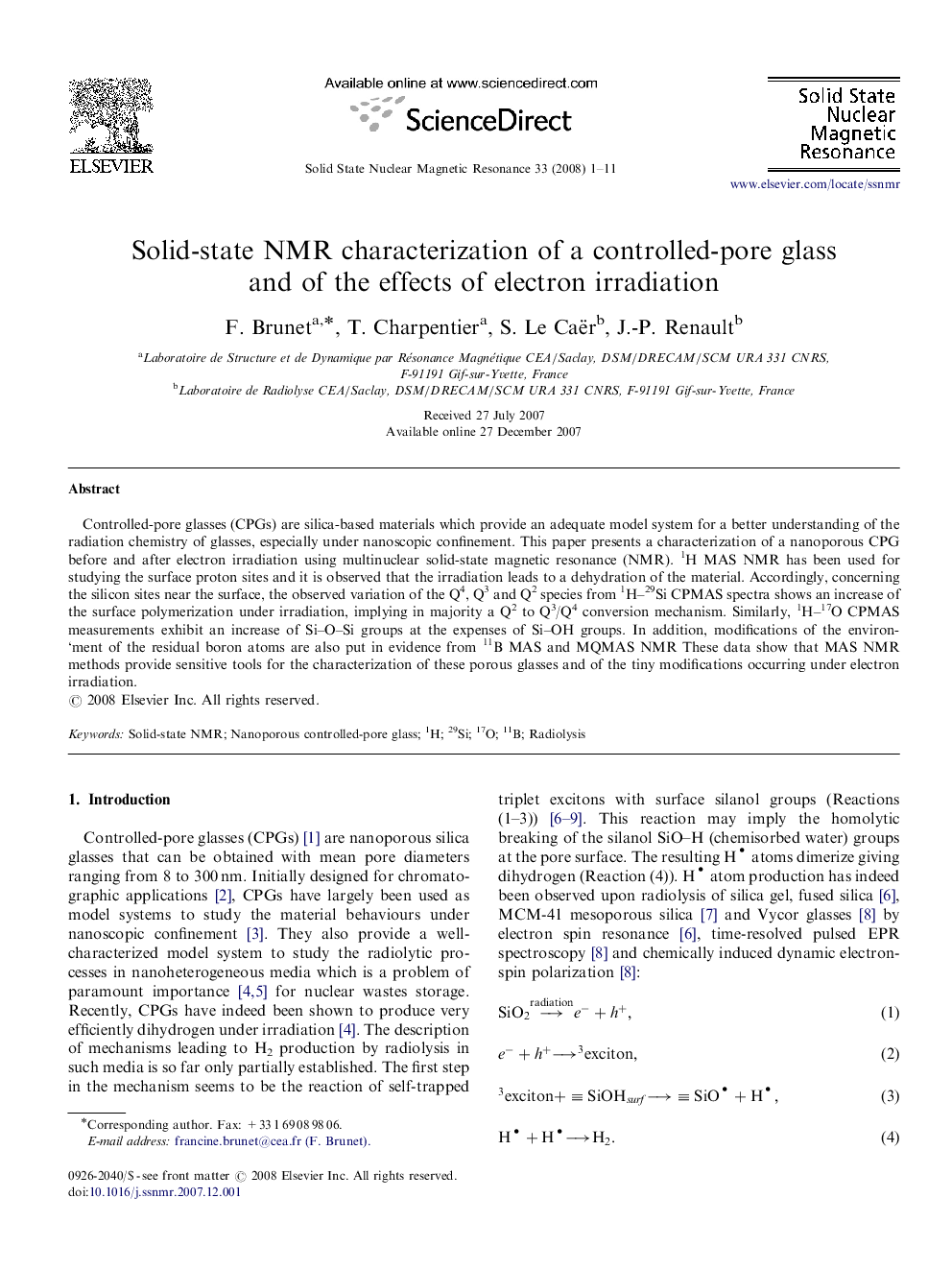| Article ID | Journal | Published Year | Pages | File Type |
|---|---|---|---|---|
| 5420776 | Solid State Nuclear Magnetic Resonance | 2008 | 11 Pages |
Abstract
Controlled-pore glasses (CPGs) are silica-based materials which provide an adequate model system for a better understanding of the radiation chemistry of glasses, especially under nanoscopic confinement. This paper presents a characterization of a nanoporous CPG before and after electron irradiation using multinuclear solid-state magnetic resonance (NMR). 1H MAS NMR has been used for studying the surface proton sites and it is observed that the irradiation leads to a dehydration of the material. Accordingly, concerning the silicon sites near the surface, the observed variation of the Q4, Q3 and Q2 species from 1H-29Si CPMAS spectra shows an increase of the surface polymerization under irradiation, implying in majority a Q2 to Q3/Q4 conversion mechanism. Similarly, 1H-17O CPMAS measurements exhibit an increase of Si-O-Si groups at the expenses of Si-OH groups. In addition, modifications of the environment of the residual boron atoms are also put in evidence from 11B MAS and MQMAS NMR These data show that MAS NMR methods provide sensitive tools for the characterization of these porous glasses and of the tiny modifications occurring under electron irradiation.
Keywords
Related Topics
Physical Sciences and Engineering
Chemistry
Physical and Theoretical Chemistry
Authors
F. Brunet, T. Charpentier, S. Le Caër, J.-P. Renault,
